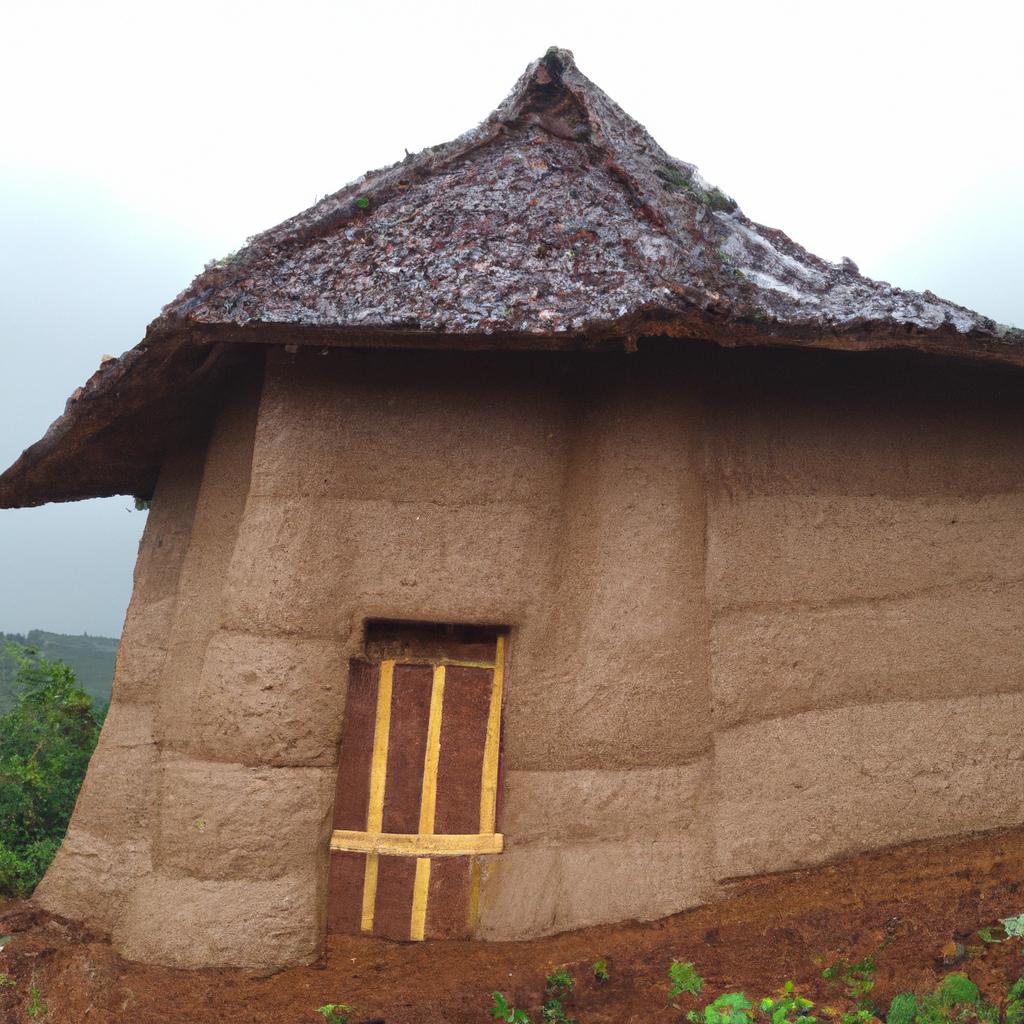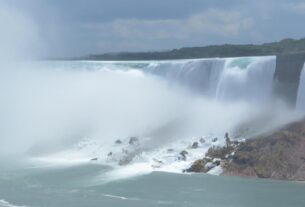Are you tired of the concrete jungle and yearning for a house that seamlessly blends with nature? Look no further than village mud house design. This eco-friendly and sustainable architectural style has been gaining popularity worldwide, particularly in rural areas. In this article, we will delve into the concept of village mud house design, its importance in rural areas, and the advantages it offers.
The Charm of Village Mud Houses
Village mud house design revolves around the use of mud, clay, and other natural materials to construct homes. Not only is this design sustainable, but it also boasts energy efficiency, durability, and affordability. In rural areas where resources are scarce, mud houses provide a practical solution for housing needs.
The significance of mud house design in rural areas cannot be overstated. For many individuals in these areas, traditional mud houses are the only affordable option. Their construction is straightforward, requiring minimal tools and materials, making them accessible to anyone. Mud houses also provide excellent insulation, keeping residents cool during scorching summers and warm during harsh winters—an invaluable feature in regions with extreme weather conditions.
Furthermore, mud houses serve as an integral part of the cultural heritage of rural communities. Passed down through generations, these houses are a vital element of local architecture. By preserving and promoting mud house design, we can ensure the survival of these cultural traditions.
In conclusion, village mud house design is an eco-friendly, sustainable, and affordable solution for rural living. It provides insulation, durability, and aesthetic appeal, making it an excellent choice for those seeking to live in harmony with nature.
The Advantages of Mud House Design
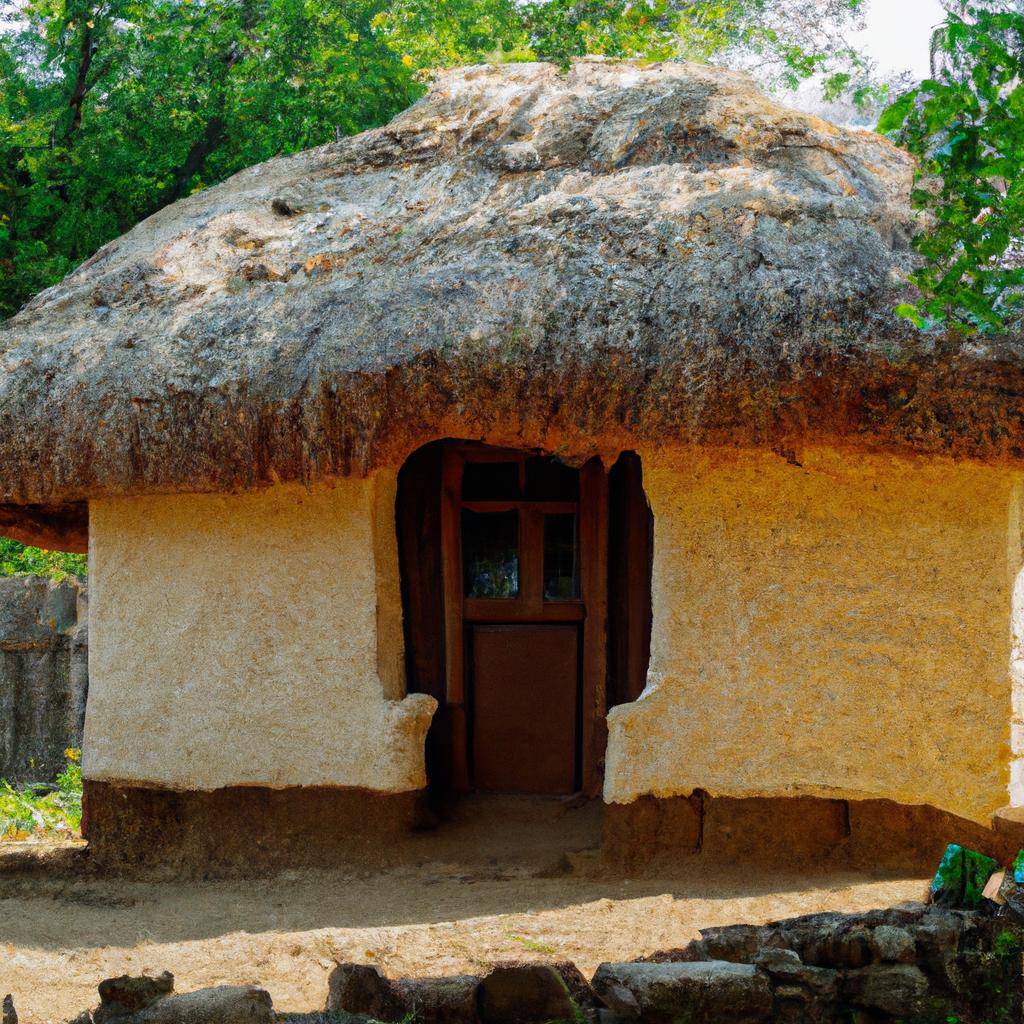
If you’re considering building a house, exploring the benefits of mud house design is a must. Mud houses offer several advantages that make them a popular choice, especially in rural areas.
Energy Efficiency
Mud houses are known for their energy efficiency. The natural insulation provided by the thickness of their mud walls, often up to a foot thick, enables the houses to maintain comfortable temperatures year-round. This insulation reduces the need for heating and cooling systems, offering a natural and sustainable way to stay comfortable regardless of the weather.
Durability
Mud houses are durable and long-lasting. Properly constructed mud houses can stand the test of time, as evidenced by many historic buildings made of mud. Mud is a natural material that can withstand harsh weather conditions, including heavy rains, strong winds, and earthquakes. The thick mud walls act as a protective buffer against external elements, creating a safe and secure living environment.
Low-Cost Construction
One of the significant advantages of mud houses is their affordability. Mud is an abundant and inexpensive material readily available in rural areas. Additionally, constructing mud houses requires minimal tools and equipment, making them accessible to all. Simple techniques such as adobe bricks or rammed earth can be employed, allowing individuals to build their own homes cost-effectively.
Sustainable Design
Mud houses are sustainable and eco-friendly by design. They utilize natural materials that are abundant and renewable, making them an environmentally responsible choice. Furthermore, mud houses are biodegradable and produce no toxic waste. By opting for mud house design, individuals actively contribute to green architecture, which focuses on utilizing natural materials and minimizing environmental impact.
In the next section, we will explore the planning and designing process of mud houses in detail.
Planning & Designing Village Mud Houses
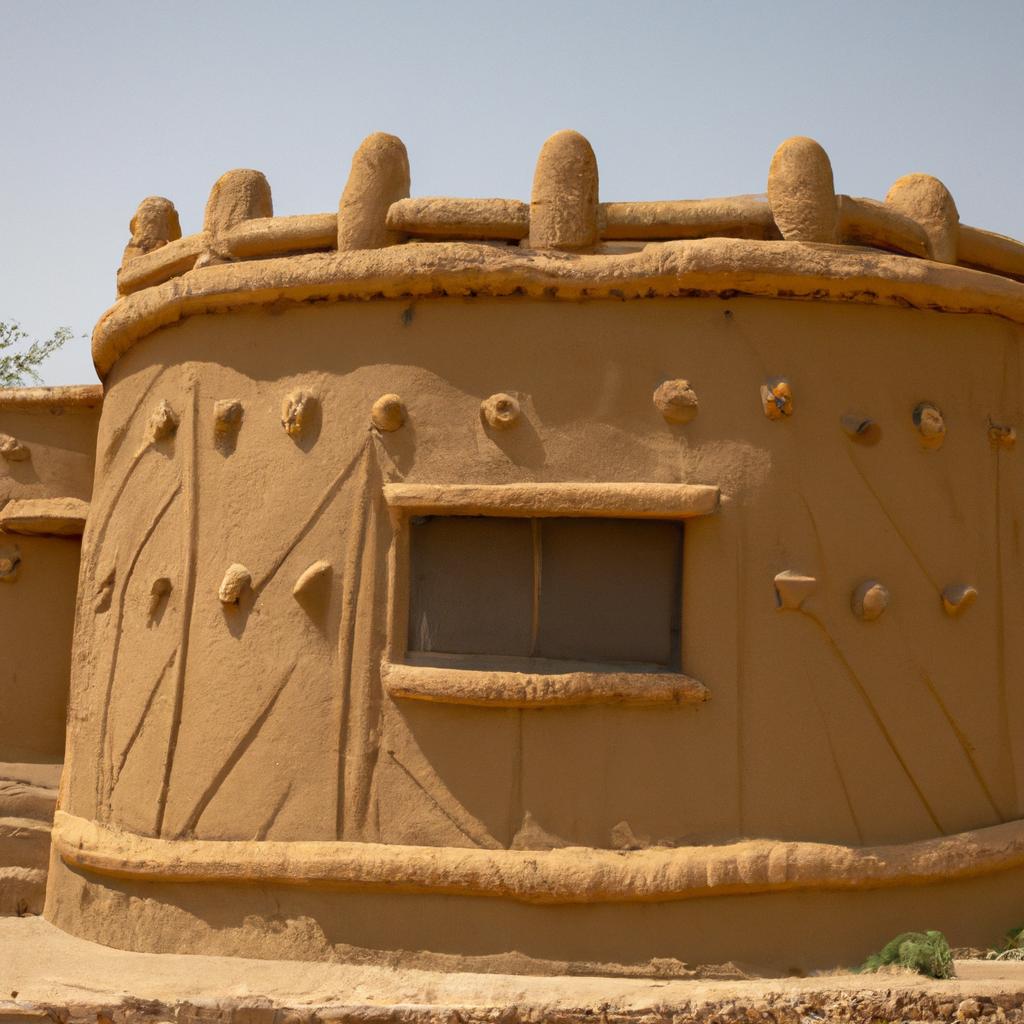
Designing a mud house requires careful planning and consideration of several factors. Unlike traditional houses, mud houses possess unique elements that distinguish them. Let’s delve into the essential factors to consider and the design elements that contribute to the perfect village mud house.
Factors to Consider
Before embarking on the design process, several factors need to be taken into account. The first factor is the location of the house. Soil type and weather conditions play a crucial role in determining the strength and quality of the mud walls. Additionally, weather conditions influence the design, particularly when it comes to the roof.
The size of the house is another important factor and depends on the number of occupants. It is crucial to create a spacious interior that comfortably accommodates all family members.
Lastly, the purpose of the house impacts its design. Whether residential or commercial, the intended purpose determines the incorporation of specific design elements and features.
Design Elements
Mud houses boast unique design elements that differentiate them from traditional houses. The use of natural materials such as mud, clay, and straw forms the foundation of these houses.
Arches, domes, and vaults are essential architectural features that provide stability and strength to mud walls. Beyond their functional benefits, these features enhance the aesthetic appeal of the house, making it visually captivating.
Traditional and modern designs coexist within the realm of mud house design. While traditional mud houses exude a distinctive charm, modern mud houses have incorporated contemporary design elements such as solar panels, insulation, and ventilation systems—ensuring comfort and energy efficiency.
In conclusion, designing a village mud house entails careful planning, considering various factors and incorporating specific design elements that guarantee functionality and aesthetic appeal. In the next section, we will explore the construction process of a mud house.
Construction of Village Mud Houses
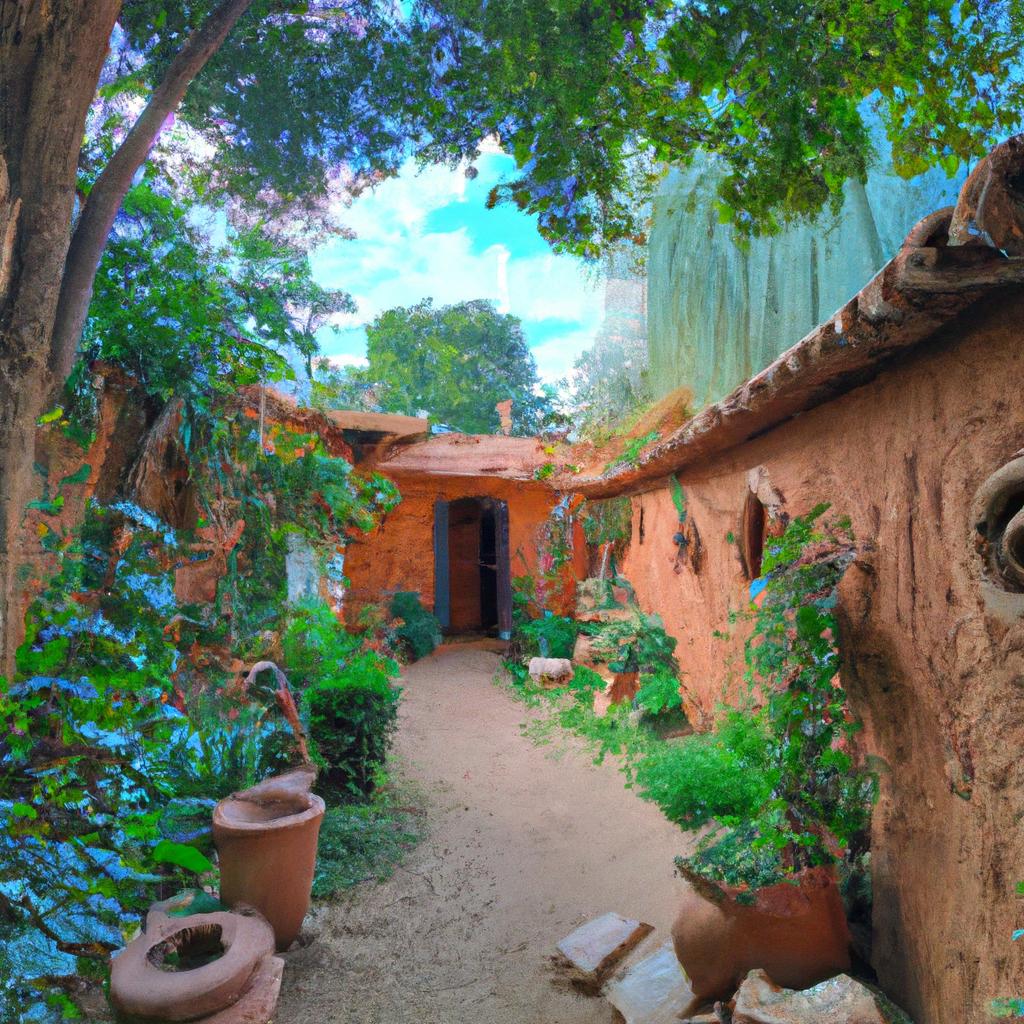
Building a village mud house may seem daunting, but it is a manageable and rewarding process. In this section, we will discuss the steps involved in constructing a village mud house.
Preparation of Site
The first step in constructing a mud house is preparing the site. This involves clearing the land and creating a level surface. Stability and levelness are crucial for the foundation, as any unevenness can lead to structural issues in the future.
Building Materials
Building materials for mud houses are readily available and cost-effective. Mud, mixed with straw or other organic materials to increase its strength, serves as the primary material. The mud mixture is then applied to a frame made of wood or bamboo. Thatch or mud tiles are used for roofing.
Construction Techniques
Various construction techniques are used for mud houses, depending on the region and local traditions. The cob technique, involving the manual application of the mud mixture to the walls, is one of the most common methods. Another technique is the rammed earth technique, where the mud mixture is compacted in layers using a rammer.
Safety Measures
Building a mud house necessitates taking safety measures. Walls must be thick enough to provide both insulation and structural stability. The roof must be capable of supporting the weight of thatch or mud tiles. Moreover, proper drainage systems should be installed to protect the house from water damage.
In conclusion, building a village mud house is an uncomplicated process that requires preparation and knowledge of construction techniques. By utilizing readily available materials and adhering to safety measures, individuals can construct a durable and sustainable mud house that provides a comfortable living space. In the next section, we will discuss the interior design of a village mud house.
Interior Design of Village Mud Houses
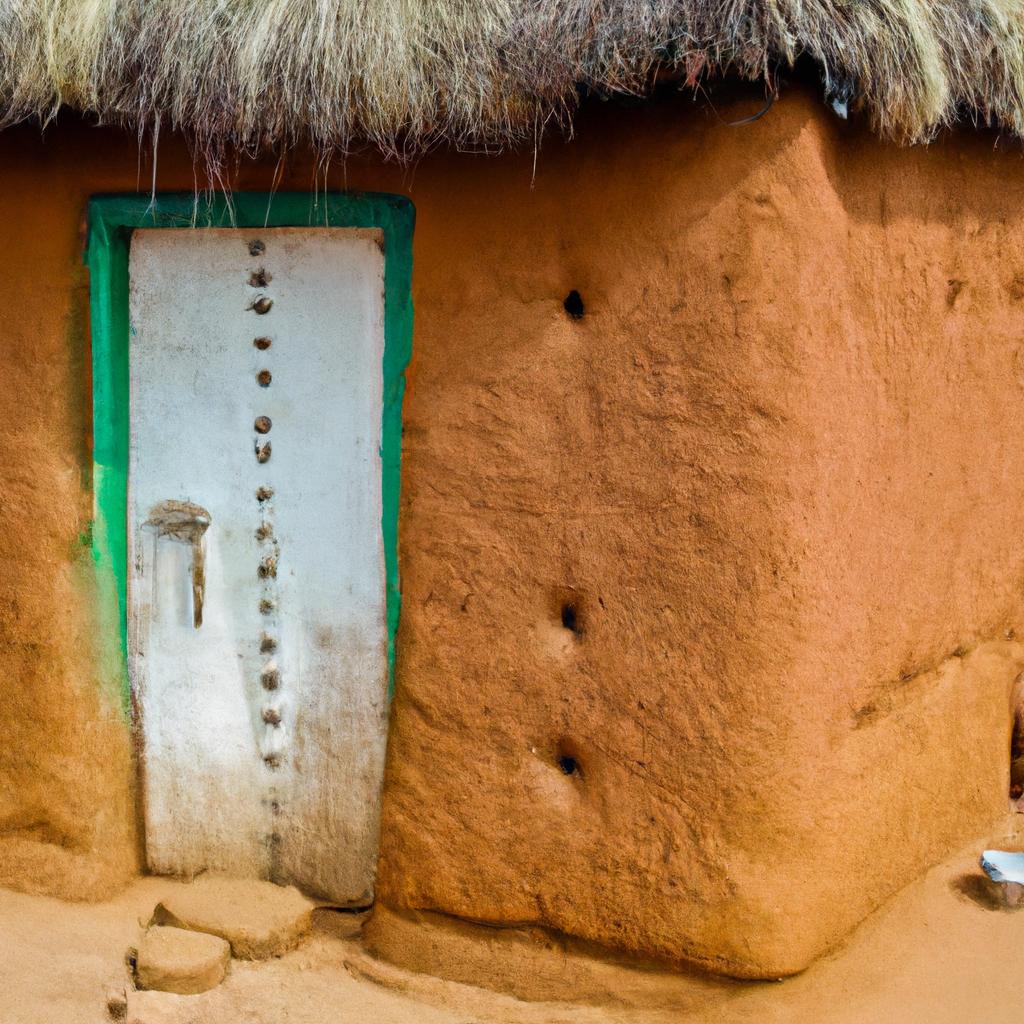
After constructing the mud house, the next step is designing the interior space to ensure comfort and livability. Interior design is a vital aspect of the overall construction process, requiring careful planning and execution. Here are some valuable tips for designing the interior of a village mud house.
Space Management
Effective space management is critical when designing the interior of a mud house. Given the limited space, maximizing functionality is essential. Creating multi-purpose spaces and utilizing furniture such as foldable tables and chairs can save space and enhance the house’s functionality.
Lighting and Ventilation
Proper lighting and ventilation contribute to a comfortable living space. Mud houses often lack sufficient natural light and ventilation, so it is crucial to incorporate large windows and skylights to bring in light. Additionally, ensuring proper cross-ventilation helps keep the house cool and fresh.
Furniture and Decor
Furniture and decor significantly impact the overall aesthetic of a mud house. Consider the functional needs of the space when selecting furniture. Low-lying furniture such as floor cushions can create a cozy and comfortable atmosphere. Incorporating local materials for decor, such as woven baskets and pottery, adds character and charm to the space.
In conclusion, interior design plays a crucial role in the construction process of mud houses. With careful planning and execution, a mud house can be transformed into a comfortable and beautiful living space. In the next section, we will explore the process of building a mud house in more detail.
Conclusion
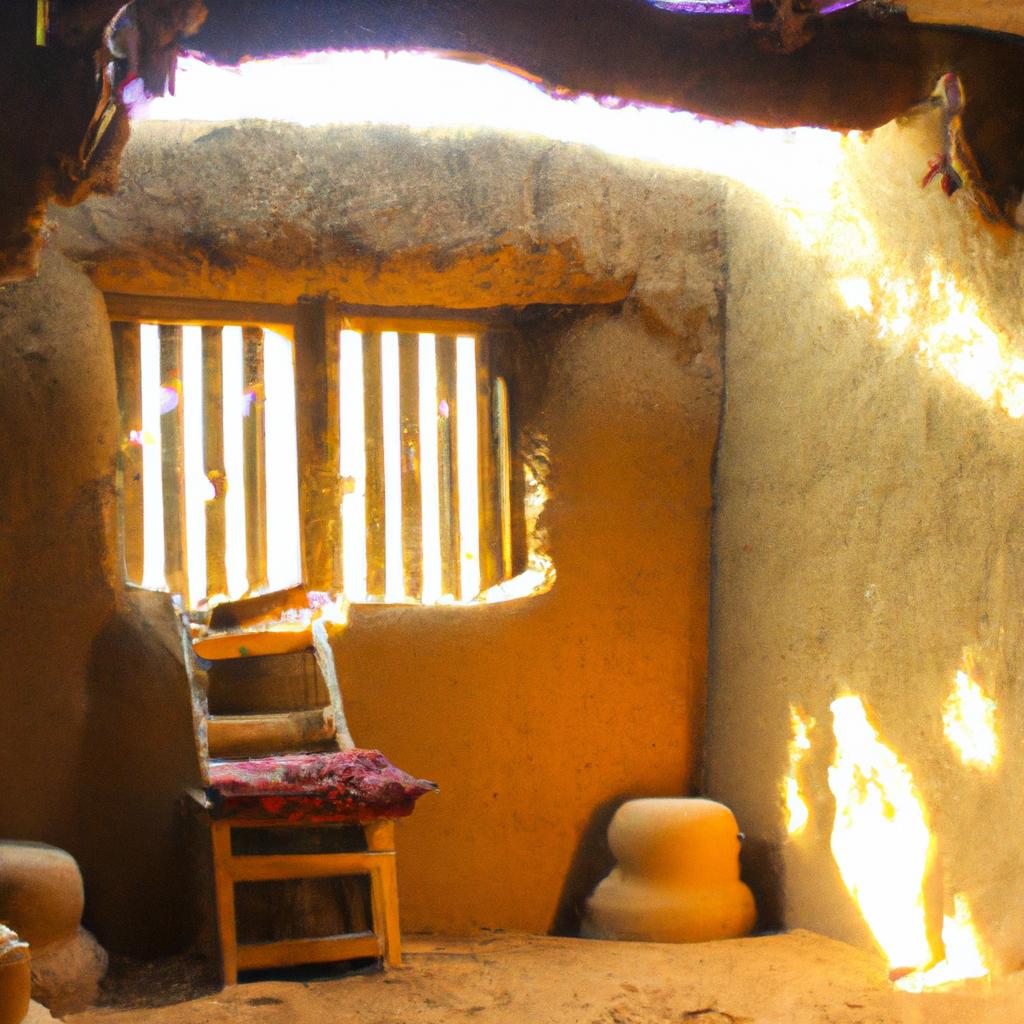
In conclusion, village mud house design offers a remarkable alternative to modern housing solutions. It is energy-efficient, durable, and sustainable, making it a perfect choice for rural areas. By preserving and promoting mud house design, we ensure the survival of cultural traditions while providing affordable housing solutions for rural communities.
As a brand that specializes in all things nature, gardening, and animals, TooLacks recognizes the importance of sustainability and eco-friendliness in every aspect of life. We encourage everyone to consider village mud house design as a practical and environmentally conscious way of living.
If you are interested in learning more about mud house design or considering building one, numerous online resources are available. From construction techniques to interior design ideas, you’ll find no shortage of inspiration for creating the perfect mud house.
In conclusion, village mud house design is not merely a housing solution; it is a way of life that allows us to live in harmony with nature while preserving cultural traditions. Let’s embrace this sustainable way of living and create a brighter, greener future for ourselves and future generations.
